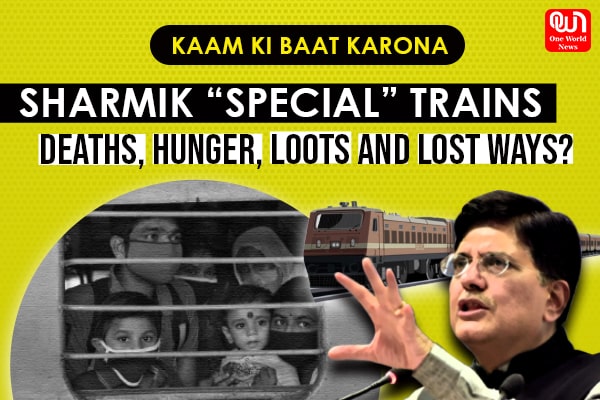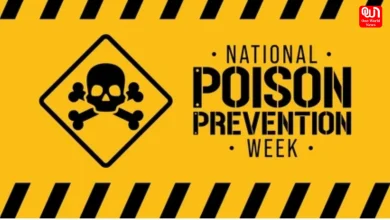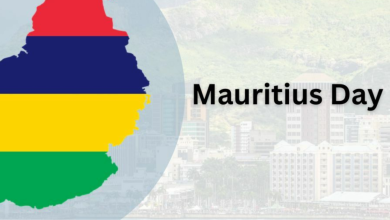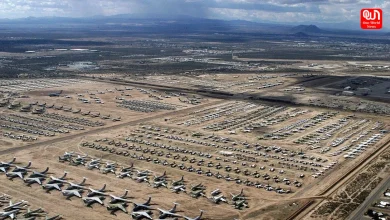Hunger, Loot, Death & Lost ways: Special Shramik Trains, poor execution killed a brilliant effort

If a train for Gorakhpur reaches Raukerla, then indeed there is something very special about Shramik trains
People who were most affected by the nationwide lockdown were migrant labours. With no work and money, they were only left with one option – to go back to their native villages. Millions of workers across India started walking miles as there was no transport available. After the plight of almost a month, Railway Ministry came to their rescue! (Like a Superman) they announced Shramik Special Trains on Twitter. This special train aim was to move migrant workers and other stranded people stuck at different places. So far, 52 lakh people have been sent to their native villages. It was indeed a good decision, but with a poor execution.
A look into what we are going talk:
Before we discuss what all happened and what all could have been done, take a look how the announcement was done:
The press note was released on 1st May 2020. The key points of the press release are mentioned below:
As per the guidelines issued by the Ministry of Home Affairs, it has been decided to run “Shramik Special” trains from “Labour Day” to move migrant workers, pilgrims, tourists, students and other persons stranded at different places due to lockdown.
These special trains will run from one point to point on the request of both the concerned State governments.
Meals and drinking water would be provided by the sending states at the originating station. (Please read it twice)
On longer routes, the Railways will provide meals en-route during the journey. – This one requires special attention.
There was miscommunication, there was no concrete planning, and there was lack of proper execution. Result – loots, hunger and in extreme cases – Death
Source:
Railways start 'Shramik Special' Trains to move migrant workers, pilgrims, tourists, students and other persons stranded at different places due to lock down
Trains will be run from point to point on the request of both the concerned State Governmentshttps://t.co/XlDGtrmQXN pic.twitter.com/cFQkkZuZSS— Ministry of Railways (@RailMinIndia) May 1, 2020
Read more: COVID-19 crisis: Auction of Airports, Is it like rearranging deck chairs on Titanic?
Shramik Trains Lost or Diverted? But why? Not many trains were operating?
Within few days of the starting of “Shramik Special Trains”, there were reports of trains losing their way and reaching some unexpected destination.
According to a report published by HW English on 25th May 2020, 40 Shramik trains lost their way, while Railway denied the report. There is no official data available, but several reports claimed the same. Videos surfaced on the social media, where migrant workers were seen complaining about the delay and diversion.
According to the report by HW,
With no work and money, migrant labours had no other option, so they decided to go back to their villages. Millions were spotted walking miles including small children and pregnant women. There was rage all over after seeing the heartbreaking images which surfaced on the internet. The government soon came into action and introduced Shramik Trains. But their operations raised several questions.
Watch migrants sharing their plights from the Shramik Special Train
#VERIFIED
— Saahil Murli Menghani (@saahilmenghani) May 23, 2020
👉Reality of Shramik train from Tamil Nadu to Bihar
👉Watch Migrant workers & students on board make SERIOUS allegations in MY REPORT WITH VISUALS
👉'No food/water for 30 HOURS'
👉'Takes 48 hours by train. But this special train is still running even after 50+ hrs' pic.twitter.com/rXUgENTzQw
Take a look at some of the bizarre incidents that took place
The train that left for Gorakhpur from Mumbai’s Vasai road ended up in Odisha’s Rourkela. This raised several questions on the operations of these trains. Indian Railway had clarified that the train did not lose the way and was diverted because of the congestion.
However, internet users have been looking for logic to change the destination from Gorakhpur to Rourkela. Like? How it is possible?
One such Shramik train was travelling with 1450 migrants to Basti in Uttar Pradesh. When people thought they have reached their destination, they found out that the train was at Ghaziabad station. There was an explanation that due to congestion, the route was changed.
Railway has itself accepted that routes were changed. Railway Board Chairman, Vinod Kumar Yadav said that around 80% of trains have been reaching Uttar Pradesh and Bihar, because of which there has been a surge in crowding of people. This is the reason why the railways had to change routes of some trains.
Source: Shramik trains lost way
Vinod Kumar Yadav said 3,840 Shramik trains moved over 52 lakh passengers.
In the past week (May 22-28), 1,524 trains ferried 20 lakh passengers, adding that the daily average number of trains during the period fell to 250.
Yadav said there is a demand for 450 trains as of now.
Figures – What Railway Ministry has to say?
Around 80% of all train passengers were headed to Uttar Pradesh and Bihar. According to data revealed during the briefing, 42.2% passengers returned to UP, followed by Bihar (36.5%), Jharkhand (4.8%), Odisha (3.9%), Madhya Pradesh (3.2%), West Bengal (2.3%), and others (5.7%).
Yadav asserted that reports of trains getting lost are “fake news.” He said, the trains had only been diverted, and no trains have got lost.
Between May 20-24, 71 trains had to be diverted as 90% of all trains operating during the period were bound for UP and Bihar, Yadav said. To illustrate the extent of congestion in the region, He further said, that Gorakhpur handled 36 trains on Thursday.
He also denied allegations that the trains were delayed claiming that 3,500 trains ran faster than a Mail Express train.
On the issue of price hike he said, the fare for Shramik trains had not been hiked, despite it being a special train.
Responding to videos of migrants looting food and water, Yadav said that initially, people hired for distributing food were not ready to enter trains due to COVID-19 leading to such a situation. Yadav further added, these instances have been reported in merely 2-3% of the trains.
During a press conference he was also asked about people dying due to insufficient food on trains, he said, “We conducted an analysis and found no shortage of food,” adding that instances of death were rare.
He also appealed to vulnerable groups—persons with co-morbidities, pregnant women, children under the age of 10, persons above the age of 65—to avoid travel by rail, except when it is essential.
Here are a few questions that we want to ask and want to seek answers?
1. The question now arises is that when there are limited number of trains running, how is their so much congestion that the train routes need to be diverted?
2. Even if the train routes were diverted, what is the point of diverting a train to South India when it is headed to North India?
3. Is there lack of manpower for signalling the trains? If yes, how is the Ministry of Railways claiming to operate railways in the best manner?
4. Why is there no preparation of adequate food and water supply at the stations where these trains are stopping?
Deaths of Migrants in Shramik Special
So far, 80 deaths have been reported but no official data has been issued by the Railway Ministry. The Ministry has issued a clarification saying, people who have died were suffering from chronic diseases.
On the other hand, migrant workers complained there was no food and water during the journey.
Around eighty people died between May 9 and May 27 on Shramik Special trains meant to ferry migrant workers home, according to Railway officials.
A heart-wrenching video of child trying to wake up his dead mother at the Muzaffarpur railway station triggered outrage among many and raised questions about the services of the Indian Railway.
According to a report of Altnews, it was clear that deceased woman was physically fit. (As per her relatives)
Questions to answered?
If there is no shortage of food and water supplies, what is the cause of the deaths in Shramik Trains?
If the cause of deaths in these trains is medical illness or Covid, were they not screened before they boarded the trains?
How Railway Minister reacted was harsh? Of course Not! He was sympathetic
Railway Minister Piyush Goyal in the most bizarre way said, “If in distress, don’t travel”. This came when 9 deaths were already reported. This is coming from an intellect like Piyush Goyal, B. Com, LL.B, F. C. A.
Don’t you think there is something utterly wrong with the system? Let’s be honest, the Shramik journey was full of chaos. By simply saying that deaths occurred due to health conditions, the ministry cannot escape from its moral responsibility. Was it so difficult for them to arrange food and water? Alright they blamed it to the current situation. If we go by with that logic, then every natural calamity should be blamed on God? This is not the first time when Indian Railway is facing a backlash due to the poor management. There are several incidents in the past. What’s new this time?
Earlier, they were held accountable, and they used to take moral responsibility. Take a look:
Former Railway Minister Suresh Prabhu resigned after 2 train accidents that took place in a span of 4 days. He was not the first one to do so.
1. Lal Bahadur Shastri:When he was the Railway Minister an accident which took place in November 1956, had left 142 people dead. He took the moral responsibility and had resigned from his position.
2. Nitish Kumar: He was the second Railway Minister who resigned owing responsibility for the Gaisal train disaster in August 1999.
3. Mamata Banerjee: She had resigned after two train disasters in 2000. However, it wasn’t accepted by then Prime Minister Atal Bihari Vajpayee.
Do you remember this? Where a Goods Train reached its destination in 4 years? Officials had instructed for a probe? Will same be done this time?
What is need of the hour?
Talking about plight of migrant workers, they were first stranded, they walked miles and then, Shramik trains were introduced. There was always a chaos for the fares of train. 85 percent and 15 percent fare formula was another riddle for them.
Train became operational, but there was no transportation to reach railway stations. They were charged high fares for taxis. All this was a result of poor execution and planning. In a nutshell, Covid-19 outbreak has highlighted problems within the system and this is the high time for introspection. It’s time to change the approach for the betterment of the Nation- India.
Have a news story, an interesting write-up or simply a suggestion? Write to us at info@oneworldnews.com







